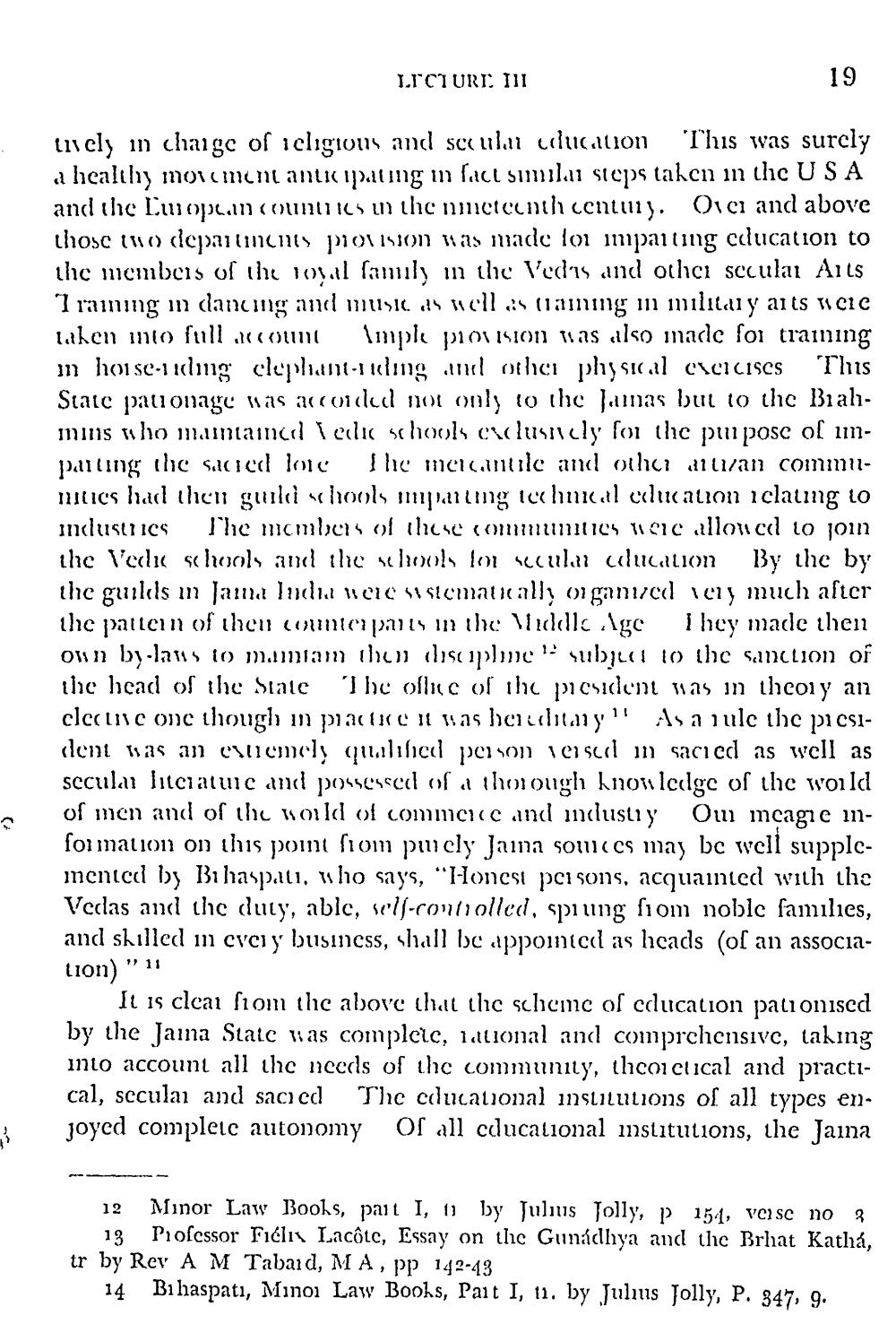________________
B
LECTURE III
19
This
tively in charge of religious and secular education This was surely a healthy movement anticipating in fact similar steps taken in the USA and the European countries in the nmeteenth century. Over and above those two departments provision was made for imparting education to the members of the royal family in the Vedas and other secular Arts I raming in dancing and music as well as traming in military ants were taken into full account Ample provision was also made for training in horse-riding clephant-riding and other physical exercises State patronage was accorded not only to the Jamas but to the Brahmins who maintained Vedic schools exclusively for the purpose of umparting the sacred lore The mercantile and other artizan communities had then guild schools imparting technical education relating to industries The members of these communities were allowed to join the Vedic schools and the schools for secular education By the by the guilds in Jama India were systematically organized very much after the pattern of then counterparts in the Middle Age I hey made then own by-laws to mamiam then discipline subject to the sanction of the head of the State The office of the president was in theory an elective one though in practice it was hereditary As a rule the piesident was an extremely qualified person versed in sacred as well as secular literature and possessed of a thorough knowledge of the world of men and of the world of commerce and industry Ou mçagie information on this point from purely Jama sources may be well supplemented by Bihaspati, who says, "Honest persons, acquainted with the Vedas and the duty, able, self-controlled, sprung from noble families, and skilled in every business, shall be appointed as heads (of an association)
12
11
17 11
It is clear from the above that the scheme of education pationised by the Jama State was complete, national and comprehensive, taking into account all the needs of the community, theoretical and practical, secular and sacred The educational institutions of all types enjoyed complete autonomy Of all educational institutions, the Jaina
12
13
tr by Rev A M Tabaid, MA, pp 142-43
14 Bihaspati, Minor Law Books, Pait I, 11. by Julius Jolly, P. 347, 9.
Minor Law Books, part I, 1 by Julius Jolly, p 154, veise no 3 Professor Fiélix Lacôte, Essay on the Gunádhya and the Brhat Katha,




